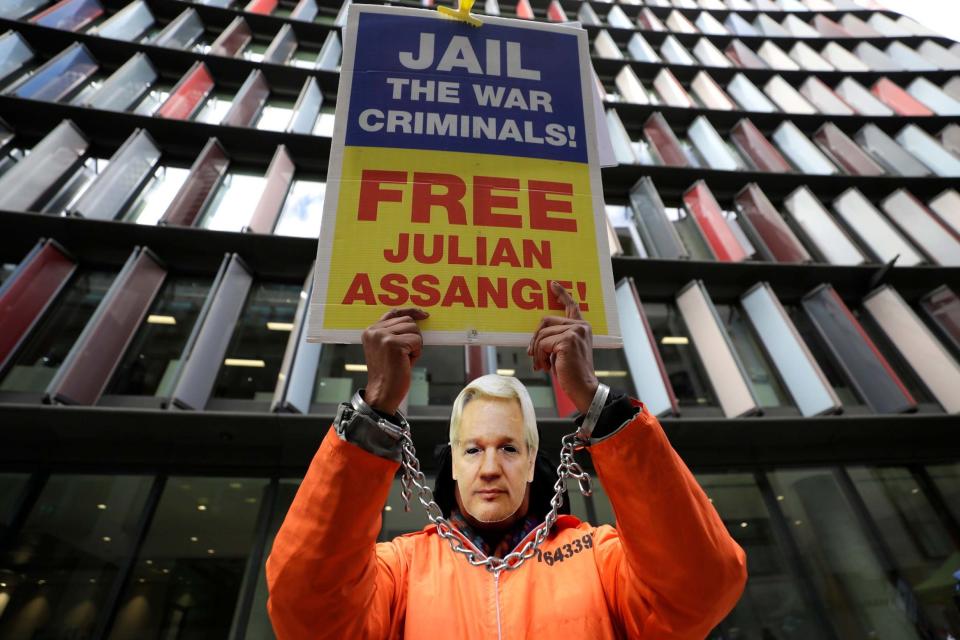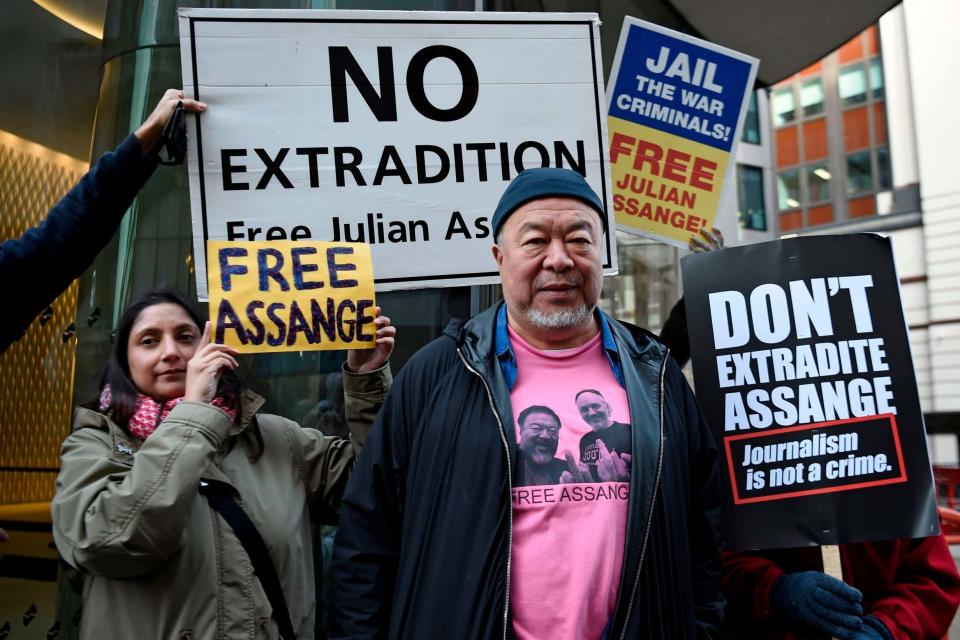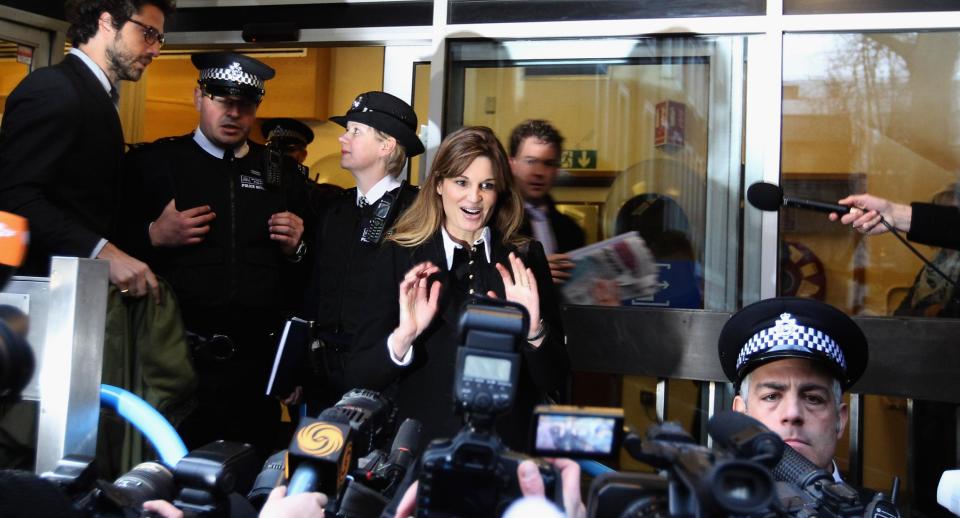My ringside view in the case of Julian Assange

Ever since playing an instrumental role in the release of around 250,000 documents in 2010 relating to the Iraq and Afghan wars and detention of prisoners at Guantanamo Bay, Julian Assange has feared the US would try to put him on trial.
In seven years holed up at the Ecuadorian embassy in Knightsbridge, the 49-year-old was confined largely to a single room, allegedly spied on by his enemies, and stripped of the niceties of normal life, as he tried to avoid the prospect of a criminal trial.
But he now finds himself squarely in the fight of his life, battling against extradition to the US and facing 18 espionage and hacking charges. Assange says he was shining a spotlight on America’s handling of the “War on Terror”.
However, the US has another view — that he is nothing more than a hacker and spy, using his Wikileaks platform to encourage illegal activity and helping US analyst Chelsea Manning to crack codes to get the classified documents.
It is also alleged that Assange put military sources in danger by revealing their names. If convicted, he could face the rest of his life behind bars alongside terrorists and serial killers. If victorious, he could walk free.
Inside Court 10
The Old Bailey is playing host to the latest stage of Assange’s epic legal battle, a historic courthouse more used to gruesome murders and terror plots. Assange has spent the last 17 months in isolation at HMP Belmarsh, locked down for 23 hours a day at the maximum security prison.
For the last four weeks, Assange has spent each day inside the glass-fronted dock of court 10, across the room from the person who will decide his fate, District Judge Vanessa Baraitser.
Assange likes to deliver freewheeling speeches in his softly-spoken tones and has occasional bursts of anger. He was met with a firm rebuke from Judge Baraitser on the third day when he interrupted a witness. “You will hear things, no doubt many things, you disagree with during these proceedings”, she told him. “If you interrupt proceedings it is open to me to proceed in your absence. This is obviously something I would not wish to do.”

Assange could not contain his frustration when the evidence of Khaled El-Masri, who was tortured at the hands of the CIA, was being summarised: “I will not accept you censoring a torture victim’s statement to this court”, insisting on it being read out in full.
When Assange was hauled from his embassy hideout — dubbed Operation Hotel by his Ecuadorian hosts — in April 2019, he had a long beard and unkempt hair. Now in court he is still as pale as ever but well-groomed. Confined to the secure dock, he at times kneels on the floor to speak briefly to his lawyers through gaps in the bulletproof glass.
Social distancing rules have meant dozens of journalists and observers watching the proceedings online through video feeds. The technology has at times failed — temporary loss of sound, video glitches, and interruptions including the sound of a dog barking somewhere on the line.
In a particularly testing episode, lawyer Eric Lewis repeatedly shouted “can you hear me?” over the videolink from the US to an oblivious courtroom. The court was also only able to offer a single camera angle on the hearing room, with the central figure of Assange sometimes out of shot. The irony of the media struggling to hear in a case about press freedom was not lost of those trying to listen in.
Lonely, but not alone
Assange’s army of supporters have packed the streets outside the Old Bailey with throbbing drumbeats and noisy demands for him to be freed. Fashion designer Vivienne Westwood is his chief cheerleader, shouting about a “stitch-up” from inside a giant birdcage.
Dissident artist Ai Weiwei, a long-time ally of Assange, staged a silent protest in the shadow of the court this week, wearing a T-shirt featuring a picture of them together taken at the embassy years earlier. “Free him, let him be a free man”, he told reporters. “He (Assange) truly represents a core value of why we are free — because we have freedom of the Press.”

Former Baywatch actress Pamela Anderson and ex-shadow chancellor John McDonnell have been among Assange’s visitors at Belmarsh, although they haven’t been seen at the Old Bailey.
London-born rapper and activist M.I.A has joined the crowds outside. Socialite Jemima Khan was one of Assange’s top backers in 2012 when she offered up £20,000 to secure his bail, but backed away from his campaign after he retreated into the embassy.
Lawyers do battle
In Assange’s corner is Edward Fitzgerald QC, who waged successful campaigns to stop the extradition of Lauri Love and Gary McKinnon to the US on hacking charges and was awarded a CBE in 2008 for his human rights work. Fitzgerald is from the internationally renowned Doughty Street chambers, which Sir Keir Starmer helped to establish, and is now home to lawyers including Amal Clooney.
Also on Assange’s team is Mark Summers QC, a tenacious extradition specialist who represented the US government previously in the fight to bring “flash crash” trader Navinder Sarao to justice.
Leading the US government’s team is James Lewis QC, described as a “Rolls-Royce advocate” who helped the US government to bring former Finsbury Park Mosque cleric Abu Hamza to justice for terrorism.
The love story
On the eve of the extradition battle, Assange’s secret love affair was thrust into the open. He has been in a relationship with lawyer Stella Moris for the last nine years, and fathered two sons with her during his time in the embassy.
Ms Moris, who joined Assange’s team as a legal researcher, recruited a friend to pose as her children’s father as a cover story, while visiting him regularly and keeping their relationship a secret from watching embassy officials.
She has since revealed how Assange proposed using virtual reality technology when she was pregnant with their first child, writing “will you marry me?” in the sky as they walked together along a beach he had created online. She has sat just feet away from Assange in court throughout the extradition hearings.

In a statement outside the Old Bailey yesterday, she said: “He is in prison because he informed you of actual crimes and atrocities being committed by a foreign power. That foreign power has ripped away his freedom and torn our family apart. That power wants to put him in incommunicado detention in the deepest darkest hole of its prison system for the rest of his life.”
Nomadic upbringing
Assange was born in Queensland, Australia, and had a nomadic childhood. His mother Christine, who left home when she was 17 and fell pregnant in her early twenties, spent time on the run from a cult leader. It is estimated Assange attended more than 30 schools.
The court heard reference to “childhood trauma and adverse experiences”, but the judge blocked further publicity of his struggles. His father John Shipton — a regular presence at the court hearings — is said to have been absent during much of Assange’s youth. But it was Mr Shipton’s name that he used when establishing the Wikileaks domain in 2006.
Assange, who fathered another son, Daniel, as a teenager, developed a passion for computers in his youth but ran into legal difficulties for hacking in Australia.

Assange’s mental struggles
Assange has been starved of sunlight and his physical and mental health have suffered. US prison expert Joel Sickler told the court Assange is plagued by nightmares of being pinned down and murdered, as he warned that confinement in a strict US prison could lead him to the brink of suicide.
Assange revealed himself that he contemplates suicide repeatedly on a daily basis and is “trying to come to terms with the end of my life”. He has watched a clip on loop of Bosnian Croat warlord Slobodan Praljak killing himself with cyanide in court in The Hague, ominously commenting “he did the right thing”, and told one medical professional: “It doesn’t matter if I’m dead in a year.”
Dr Quinton Deeley, a consultant neuropsychiatrist, said he believes Assange is on the autistic spectrum. “He has had very few lifelong friends.” At times in court, Assange has appeared to struggle to remember the simplest of details, like his own date of birth.
The Trump connection
Next month’s US election adds a dimension to proceedings. President Trump stands accused of reviving the case against Assange when it had gone nowhere under President Obama, branding his Wikileaks adversary a “spy” and using it in his war on the media.
Assange’s long-standing lawyer Jennifer Robinson, who was once famously caught in a clinch with Corbyn aide Seumas Milne, told how US Congressman Dana Rohrabacher visited the Ecuadorian embassy in 2017 at Trump’s behest to offer a pardon, in return for help in his political manoeuvrings against the Democrats.
Assange refused to reveal a source of information, and the following year he was indicted on espionage charges. Judge Baraitser will not decide if the Americans can have Assange until after the US election.
If she agrees to extradite, Assange’s legal battle, which has been raging for more than 10 years, will go on with his army of supporters and celebrity fans watching on closely. For now, his life in isolation continues.
Read more
Wikileaks founder Julian Assange faces Christmas behind bars
Iraq atrocities 'would have remained a secret but for Julian Assange'
'Suicidal' Assange plagued by decapitation nightmares, court hears

 Yahoo Sport
Yahoo Sport 





































